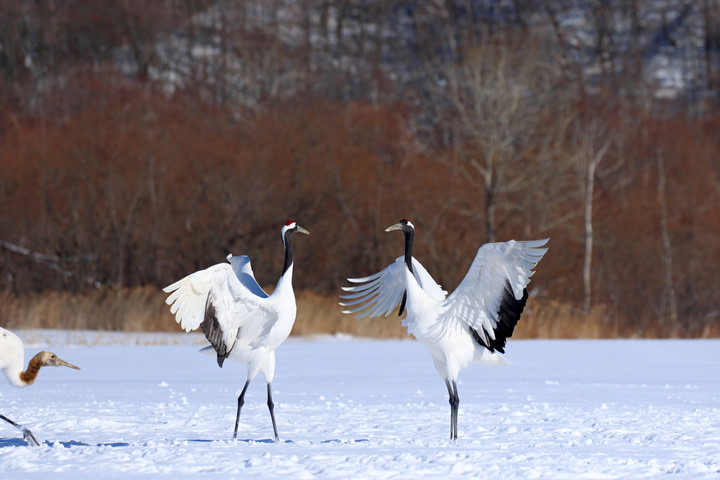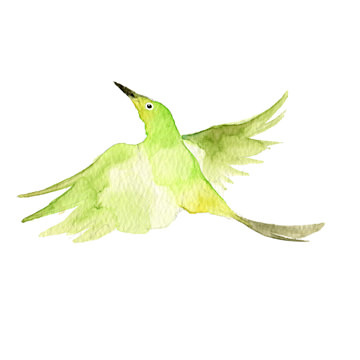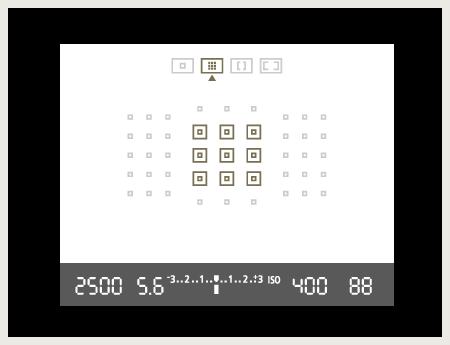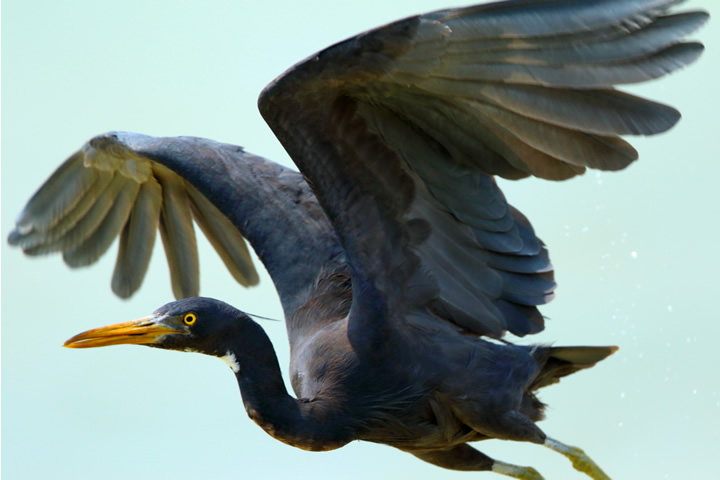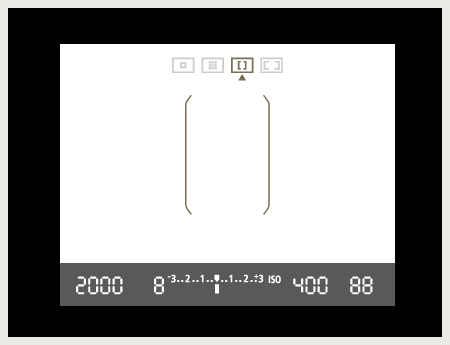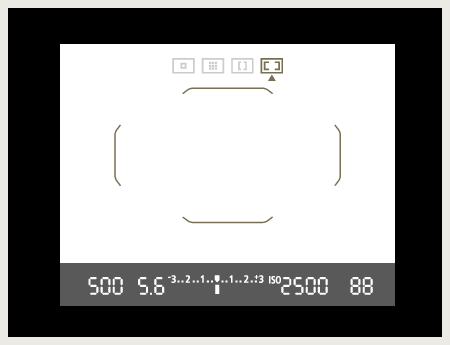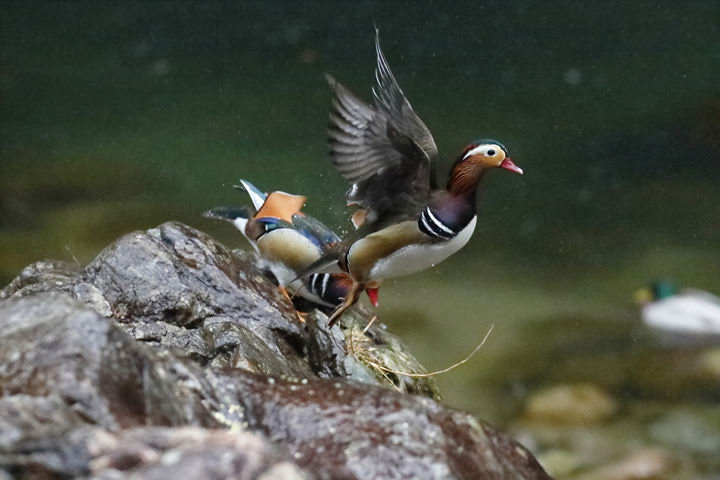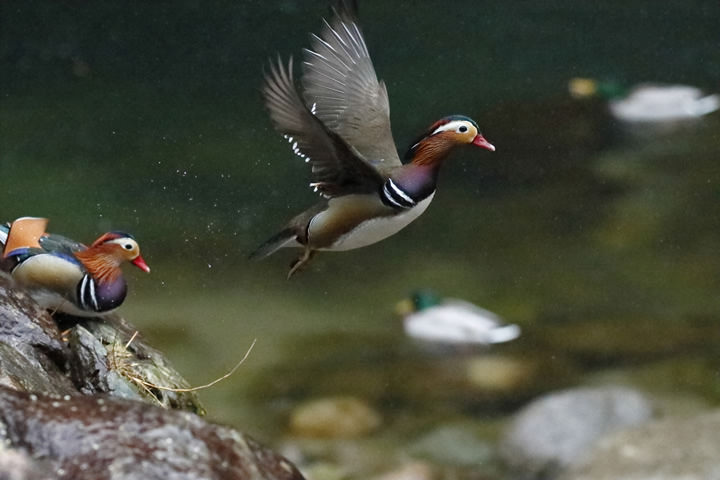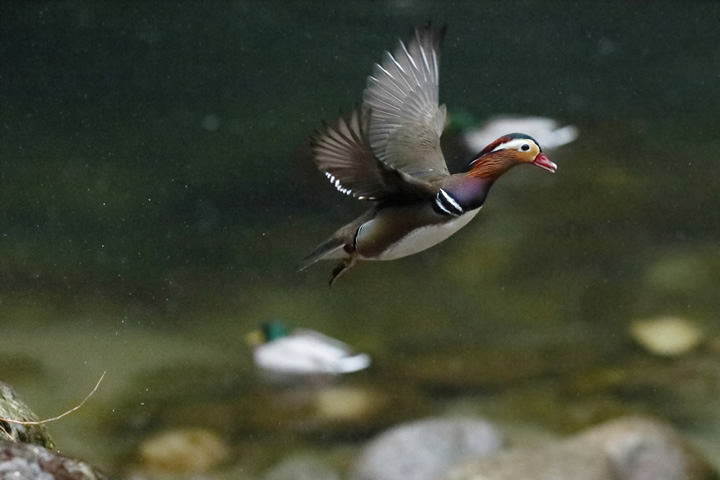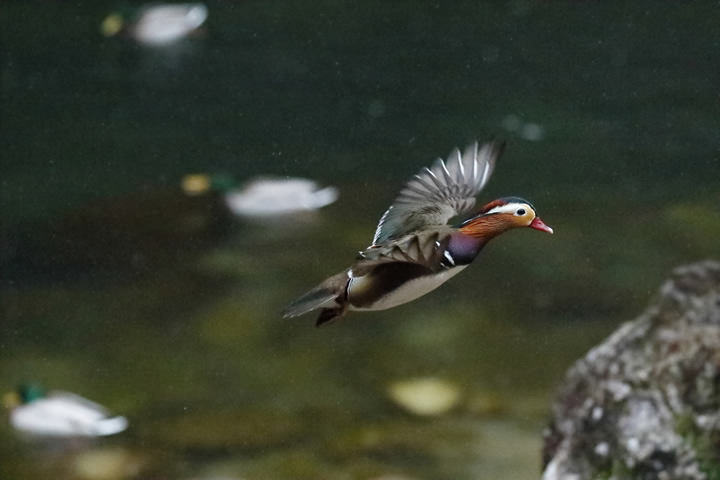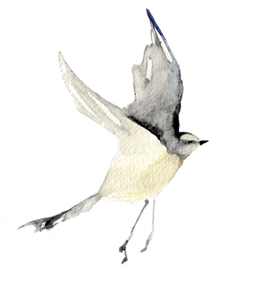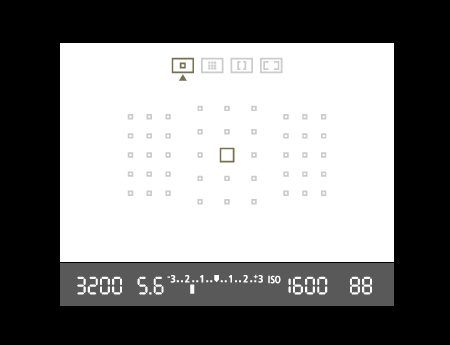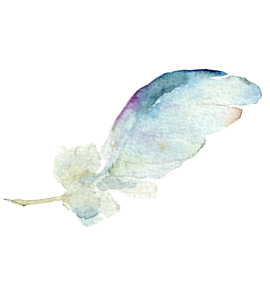I snapped a series of shots of a Great Egret in flight. Because I had inadvertently left the camera set to Single-point AF, the focus jumped to the background. I tried again, following Mr. Tozuka's advice to change the AF area selection mode, and this time the focus was right on the mark!
how to
photograph
wild birds
Where do I focus? Part 2 (Focusing with groups of AF points)
In Lesson 13, we learned about AF patterns that acquire focus with one AF point as well as patterns that focus using adjacent AF points to assist the manually selected AF point in the center of the cluster. In this lesson, we will learn about AF patterns ideal for locking on subjects with larger groups of AF points.

A pair of Red-crowned Cranes performs a courting dance. Because the movements are highly animated, using a point-type AF area selection mode poses the risk of losing focus on the subject, meaning that you could miss the golden opportunity to shoot this rare performance. With Zone AF, however, which holds the subject in focus by using a group of AF points, it's possible to photograph this graceful dance from beginning to end.
- Aperture value: f/5.6
- Shutter speed: 1/5000 second
- ISO speed: ISO250
- Exposure compensation: 0
- Focal length: 227mm
- DSLR Camera (APS-C image format)
